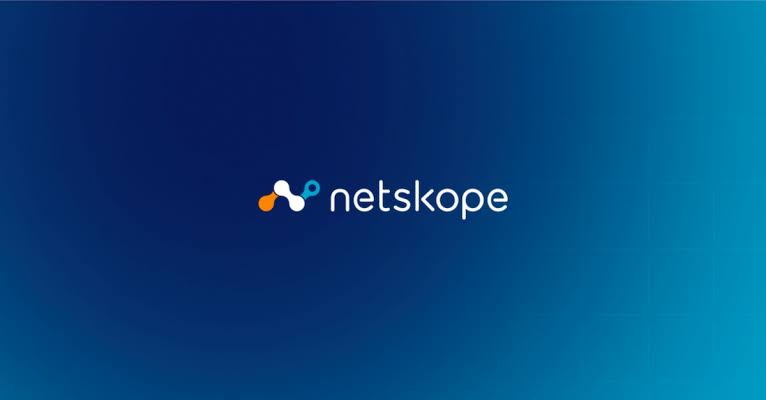New research details major growth of generative AI adoption, cloud app risks, top threats and adversaries throughout 2023
Netskope, a leader in Secure Access Service Edge (SASE), today shared new research showing that more than 10% of enterprise employees access at least one generative artificial intelligence (AI) application every month, compared to just 2% a year ago. The findings, published as part of Netskope’s annual Cloud & Threat Report, underscore the rapid growth in generative AI app adoption in the enterprise and also the emerging security risks that come as a result. Netskope’s annual Cloud and Threat Report details major cloud security trends of 2023 and anticipates how cloud adoption and the resulting attack surface will continue to evolve in 2024.
2023: The Year of Generative AI
Netskope found that more than 10% of all enterprise users access at least one generative AI app per month, compared to just 2% a year ago. In 2023, ChatGPT was the most popular generative AI application, accounting for 7% of enterprise usage.
While Netskope expects the total number of users accessing AI apps in the enterprise to continue rising moderately next year, there is an emerging population of power users who are steadily growing their use of generative AI apps. With use currently growing exponentially, the top 25% of users can be expected to increase generative AI activity significantly in 2024 as this group finds new ways to integrate the technology into their daily lives.
“With growing AI app usage, employees are more likely to expose sensitive data like credentials, personal information, or intellectual property,” said Ray Canzanese, Threat Research Director, Netskope Threat Labs. “For safe enablement of AI apps, organizations must implement reasonable controls and advanced data security capabilities while focusing on how employees can use AI productively.”
Cloud App Use on the Rise
Overall adoption of cloud applications continued to rise throughout the year, with enterprise users consistently trying out new apps while increasing their usage of the most popular apps.
Highlights include:
- The number of cloud apps the enterprise accessed increased by an average of 19% per year, with users jumping from 14 to 20 different apps in just two years.
- Half of all enterprise users interact with between 11 and 33 cloud apps each month, with the top 1% using more than 96 apps per month. Interactions with these cloud apps are increasing at an even faster rate, from just over 1,000 activities per month two years ago to nearly 2,000 activities per month today.
- Most enterprise users generate between 600 and 5,000 activities per month, while the top 1% of users generate more than 50,000 activities per month.
Social Engineering Attacks Take Top Spot
The most common way attackers gained initial access in 2023 was through social engineering, as it is the easiest way adversaries can find their way into systems that quickly patch against known security vulnerabilities and limit remote access. The most widespread schemes this past year used social engineering attacks like phishing to steal credentials and Trojans to trick victims into downloading and installing malware.
Users fell for phishing scams three times more frequently than users downloaded trojans, with an average of 29 out of every 10,000 enterprise users clicking on a phishing link each month in 2023. Cloud apps and shopping sites were among the top targets throughout the year, while banking portals, social media and government targets also saw a notable increase.
As the second most common attack vector, users downloaded an average of 11 trojans per month per 10,000 users, meaning a typical organization of that size would have had an average of 132 trojans downloaded by users on their network per year.
Threat Actors and Activity
The majority of adversary activity targeting Netskope customers in 2023 was criminally motivated, with geopolitical adversaries most active against users in Asia and Latin America. Netskope found that the top criminal adversary groups throughout 2023 were based in Russia , and the top geopolitical threat groups were based in China (targeted primarily at victims in Asia, especially Singapore).
Many threat groups relied heavily on Cobalt Strike to maintain permanence and deploy ransomware, infostealers, wipers and other malicious software to extort their victims. In the report, Netskope Threat Labs shares profiles on the top 5 adversaries seen this year, including specific campaigns and activity coming from each group seen firsthand by Netskope.
Canzanese added, “In 2023, we saw adversaries taking advantage of the enterprise’s increasing adoption of cloud apps, especially through social engineering tricks. This trend is likely to continue in 2024.”
Key Takeaways for Organizations
Netskope recommends organizations take the following steps to fight against these top trends:
- Limit access to only those apps that serve a legitimate business purpose, create a review and approval process for new apps and implement a continuous monitoring process that will alert security operators when apps are being misused or have been compromised
- Ensuring the safe enablement and adoption of AI apps should now be an urgent priority for most organizations, including identifying permissible apps and implementing controls that empower users to use them to their fullest potential while safeguarding the organization from risks
- Continue investments into reducing the risk of social engineering, including security awareness training and anti-phishing technology









